Knivesshipfree.com is a Survivalcommonsense.com sponsor. I didn’t get a free knife to field test, and neither KSF nor True Saber Knives had any input into this review.
The best place to field test a hunting knife is in the field, using it to process a big game animal.
by Leon Pantenburg
But hunting season for me was a couple months away, and there is never a guarantee that I’ll harvest a big game animal. So I went to Addy’s Custom Meats and they let me use several knives to help process a Longhorn cow. There’s nothing like a several-hour, hands-on session to help you decide if you like a knife or not.
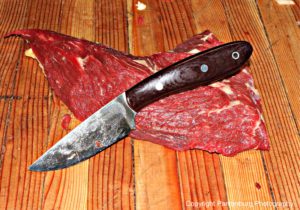
The True Saber Shawnee is a hard-working, user knife.
And I like the True Saber Shawnee.
I was initially attracted to the Shawnee because of the clean lines, the simple design, and the generous, comfortable-looking handle. Once in hand, I appreciated the comfortable feel of the knife, along with the great balance.
Here are the Specifications
| Overall Length: | 8 7/8″ |
| Blade Length: | 4″ |
| Blade Steel: | CPM-154 |
| Blade Thickness: | 0.125″ |
| Weight: | 5.6 oz. |
True Saber Knives are the result of hard work and development from up-and-coming maker Todd Wielinski. His designs feature comfortable handles, CPM-154 premium stainless steel, and a flair that many are coming to love.
Here’s what I found after using the Shawnee and having professional meat cutter Teheala Addy test the design.
Handle: A butcher or meat cutter wants a handle that works for them, because a knife will be in hand all day, every day. A handle that is not comfortable to use will soon be replaced.
As much as I love wood-handled knives, for a user, I’ll go with micarta. My experience is that the materials gets tacky when wet, and “grippier.” I’ve used micarta handles when covered with blood, viscera, fish slime and other nasty fluids, and I never felt like my hand might slip. When working on the Longhorn, the handle was completely covered with slippery fat, but my hand never slipped.
Teheala and I both like how the Shawnee handled for trimming fat off the meat and separating the different muscle groups.
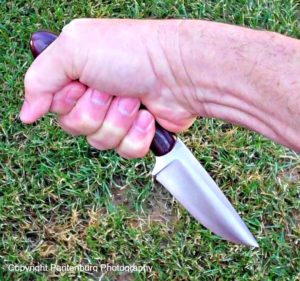
You will use different grips on the handle as needed when processing big game animals.
I also like how the handle and blade next to it are situated. There is no hilt to get in the way, but still, there is no danger of your hand sliding onto the blade while using it.
When skinning, I frequently change handle grips. Much of the time, I put my index finger on the spine, and grip the handle with the last two fingers on my hand. The generous handle, with the swell near the end, makes this grip comfortable and safe.
The handle is still long enough to fit my large hands in a hammer or hatchet grip. When it comes to handle fit, you have to experiment with different grips, depending on how you might be using the knife.
Blade length: My favorite hunting blade length is between four and five inches. For me, this is just about right for the gutting, skinning and quartering of a deer, elk or similar-sized big game animal. My current go-to hunting knife (The search for the perfect hunting knife never ends!) is the Ambush Tundra, with its 4.25 inch Canadian-style blade.
Pat Simning, one of my hunting buddies, uses a four-inch Bark River Snowy River for everything from smaller hogs to moose. The blade length works for him, too.
Steel: CPM 154 is good stuff. My only experience with it so far is from butchering, but the stainless steel holds an edge very well. The knife was far from dull when we finished with the Longhorn, but a quick stropping restored it to wicked sharp.
Grind: Convex is my favorite all-around grind. I was converted after testing three different grinds on the same elk. Convex emerged as the most effective skinner. My Bark River Sportsman, with its convex grind, is my most-used knife, being used for filleting fish, trimming and boning meat, kitchen tasks etc.
Spine: I prefer a 90-degree grind on the spine, like an ice skate. This edge can be used for scraping a ferrocerium rod to make sparks for fire starting or for processing tinder. A properly-used spine can spare the sharpened edge.
Point: The Shawnee has a drop point, which is an excellent choice for a hunting knife. The point is centered, which makes it good for drilling holes in wood. This also means the point should not pierce the entrails when making that initial spine-down, edge-up cut in the abdomen when gutting an animal.
Sheath: The Shawnee comes with a sturdy leather sheath that secures the knife safely and securely.
Name: Knives made in America should have American names IMO. I like that this series is named after an eastern Native tribe. The Shawnee are an Algonquian-speaking ethnic group indigenous to North America. In colonial times they were a semi-migratory nation, primarily inhabiting areas of the Ohio Valley.
Made in the USA: Support American small business! When something is made here, that means the company and craftspeople make a living wage and pay local, state and federal taxes. They also have a stake in their community. Buy American!
Do you need a Shawnee?
If you are a hunter, you need a good knife. The Shawnee is a good knife, and one that can handle all your big game hunting needs. It is reasonably priced at about $170.00, and the hunter looking for a tool that can be depended on won’t be disappointed with the Shawnee.
The True Saber Shawnee is available through Knivesshipfree.com.
Please subscribe to our website and YouTube channel

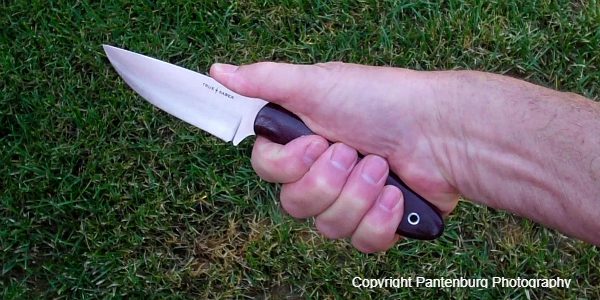
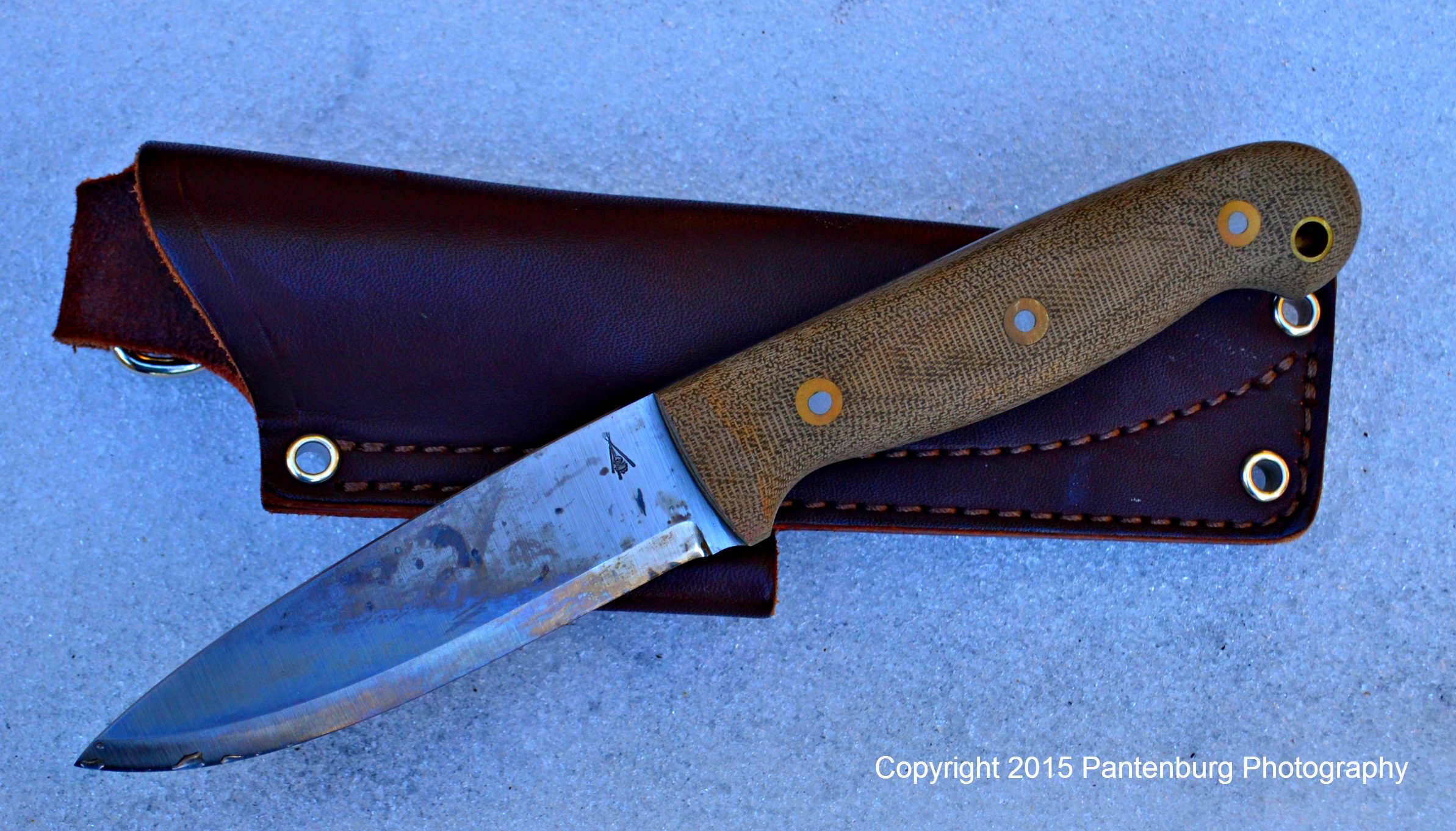
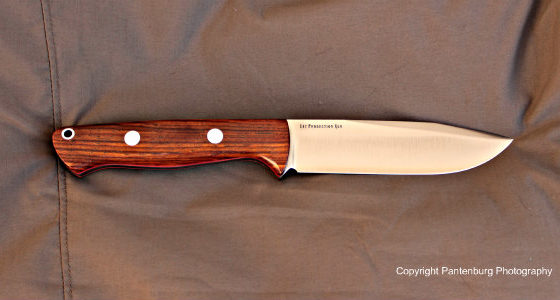
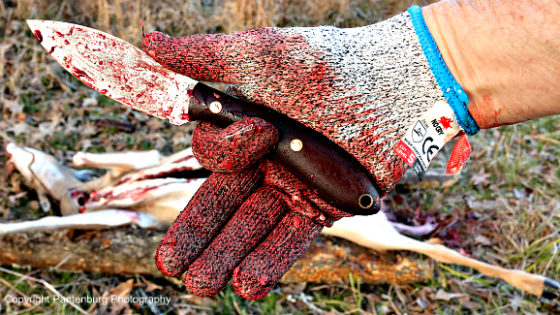
Leave a Reply